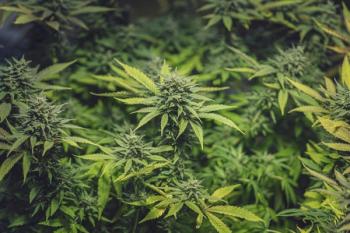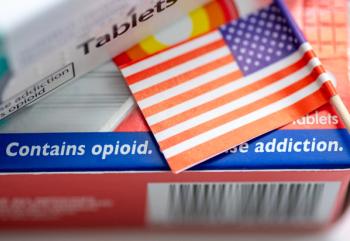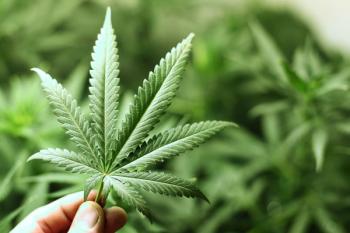
- Drug Topics November 2022
- Volume 166
- Issue 11
Are Cannabinoids Key to Harm Reduction in Opioid Use Disorder?
Cannabinoids lack the habit-forming mechanism of action found in methadone and buprenorphine, unlocking new potential for the drug.
In late 2021, when the CDC announced the most recent data on drug overdose deaths in the United States, the numbers were stark: more than 100,000 Americans died during a 12-month period ending in April 2021—an increase of 28.5% from the previous year.1 Opioid-specific deaths also increased, from 56,064 to 75,673, during that same period.
Researchers are already looking outside opioids for pain relief, and cannabinoids are being considered as one solution. But when it comes to harm reduction, investigators are also reviewing the potential for cannabinoids as a treatment for opioid use disorder (OUD) itself.
“With increased public interest in the possible therapeutic advantages of cannabis and cannabinoids in the treatment of OUD, several states have added—or considered adding—OUD as an indication of their state’s medical marijuana program,” said Tatyana Franklin, PharmD, founder and owner of Skin Rx-Pert LLC.
Cannabinoids As Harm Reduction
In recent years, multiple studies have evaluated whether cannabis use can help individuals recover from OUD or can serve as a safer pain management approach than pharmaceutical opioids. Results of these studies have been promising.
A study2 by the Recovery Research Institute, a nonprofit research institute of Massachusetts General Hospital and an affiliate of Harvard Medical School in Boston, saw researchers looking at the relationship between cannabis and OUD. Data from 2 measurement periods (2001-2002 and 2004-2005) from the National Epidemiological Survey on Alcohol and Related Conditions were utilized in the study. One goal was to determine whether marijuana could be used as an alternative to opioid medications for individuals living with chronic pain; another was to evaluate whether marijuana use might predispose someone to develop a drug use disorder including, but not limited to, OUD.
The researchers found that cannabis users had 3.5 times’ greater odds of any opioid use and 2.6 times’ greater odds of new-onset opioid use 3 years later. These results were similar even after adjusting for the many potential factors that could explain this relationship.
Despite these data, cannabis derivatives are being explored as novel drugs to treat OUD. Sampson Asumadu, PharmD, a pharmacist at AdCare Hospital, an American Addiction Centers treatment facility in Worcester, Massachusetts, noted that use of approved therapies to treat OUD is centered primarily on 2 drugs, methadone and buprenorphine, which are addictive and have the same properties as opioids—which cannabis does not have. In fact, active chemicals in cannabis have been shown to treat withdrawal symptoms and decrease cravings, whether taken by itself or as an adjunct.3 Perhaps most importantly, it is—in some parts of the country—easily available at the state level.
“Using cannabis to treat OUD shows a different treatment path than the use of…methadone and buprenorphine, which in themselves are addictive and may present other problems down the road for the patient,” Asumadu said. “Pharmacologically, the mechanism of action of cannabis is different from that of opioid substitutes, making it more appropriate to use in treatment of OUD by itself. The use of cannabis in OUD treatment also removes the stigma attached to the use of methadone and buprenorphine by patients for detox.”
Daniele Piomelli, PhD, distinguished professor of anatomy and neurobiology at the University of California, Irvine School of Medicine, explained that cannabis usage as a harm reduction method is accomplished in 2 main ways: coping with withdrawal symptoms and helping prevent relapse into opioid use.
“Because cannabis may enhance the beneficial effects of opioid painkillers, it may be used to reduce [the] opioid dose,” he added. “We don’t know if there are any benefits. In fact, there is some evidence that using cannabis may aggravate depression and anxiety in persons with OUD. But the quality of the evidence is still very limited and, as always with cannabis, there are no robust clinical trials that address the issue.”
The Pharmacists’ Role
“The legal and logistical challenges in obtaining conventional medications make cannabis more attractive,” said Asumadu. Cannabis, though, has been decriminalized across much of the United States, and in some areas is easier to obtain than methadone or buprenorphine, “making it more attractive to recommend.”
But pharmacists need to be careful of what they say. Cannabis remains classified by the United States Drug Enforcement Administration as a Schedule I substance with no medicinal use, meaning that on a federal level it is a criminal offense to obtain, dispense, or sell cannabis. “This also makes it a federal offense for any institution receiving federal funding,” Asumadu explained. “Although some states have made cannabis legal, it is still illegal under federal law, which supersedes state laws and puts pharmacies and pharmacists at risk of losing payments, reimbursements, and their federal licenses.” And navigating these laws, Asumadu added, is a significant challenge for pharmacists.
This means that, for now, pharmacists stay away from championing this approach to patients. Legality aside, Piomelli would argue against making such a recommendation before more evidence is collected. “Some states include OUD in the list of conditions eligible for [medical] cannabis use, and many [individuals] interpret that as an endorsement,” he said. “That is not the case, however, because such recommendations are based more on anecdotes and political pressure than on data.”
Academic curricula in pharmacy, medicine, and nursing are still saying very little about cannabis. The main challenge, then, is to answer questions from patients in a way that is empathetic and based on evidence. How to do this, given the current lack of knowledge, is difficult, Piomelli said. “What I would say to a person with OUD who is determined to try cannabis is ‘start low and go slow.’”
Although current evidence does not justify the inclusion of cannabis or cannabinoids as therapy for OUD, Franklin pointed out that “researching the possible therapeutic uses of properly selected cannabis components or cannabinoids to treat certain features of OUD has scientific relevance.”
Given the high rates of treatment dropout among patients receiving therapy for OUD, treatments that enhance clinical outcomes are particularly important. “Further research into the potential therapeutic uses of cannabis and cannabinoids in the treatment of OUD is warranted, but it must be done with the same rigors that we expect of other pharmaceutical products,” Franklin said. “Policy makers and physicians should avoid promoting cannabis and cannabinoids as evidence-based therapies for OUD until further research is available.
References
1. Drug overdose deaths in the U.S. top 100,000 annually. News release. CDC. November 17, 2021. Accessed October 11, 2022.
Articles in this issue
about 3 years ago
Tackling Pneumonia in the Pharmacyabout 3 years ago
Text Message Reminders Raise Flu Vaccination Ratesabout 3 years ago
Keys to Managing Gestational Diabetes in the Pharmacyabout 3 years ago
Science Communication Tips for Pharmacistsabout 3 years ago
What Do the Midterms Mean for Pharmacy?about 3 years ago
Crisis (Not) AvertedNewsletter
Pharmacy practice is always changing. Stay ahead of the curve with the Drug Topics newsletter and get the latest drug information, industry trends, and patient care tips.





























































































































